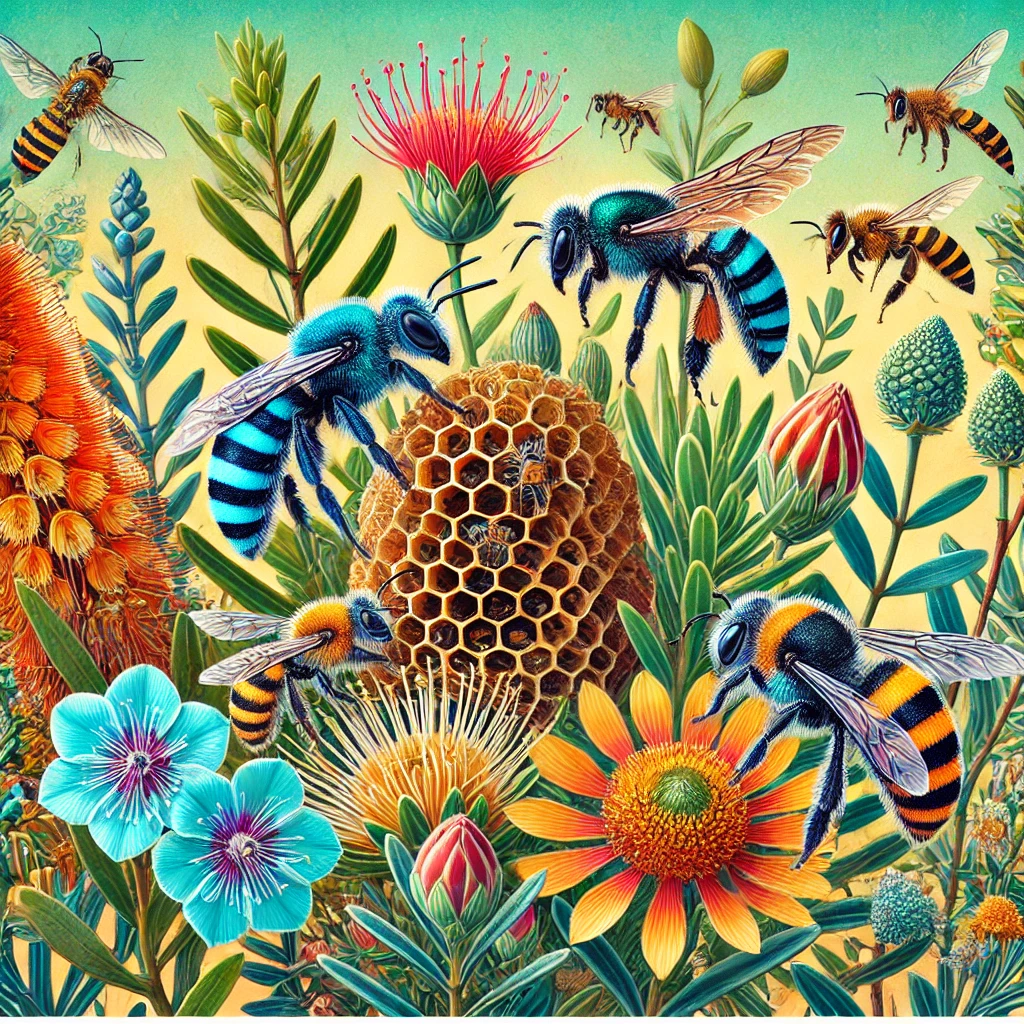Introduction
Australia is home to a fascinating array of native bees, with over 1,700 species buzzing across its landscapes. These tiny, often overlooked pollinators are vital to the health of our ecosystems and a joy to observe. Let’s delve into the world of Australian native bees, exploring their unique characteristics, importance, and how you can support them.
What Makes Australian Native Bees Special?
Australian native bees are incredibly diverse, ranging from the tiny Quasihesma bee (just 2mm long!) to the strikingly large Great Carpenter Bee. Unlike the European honeybee, many native bees are solitary, meaning they don’t form hives but instead live and work independently.
Some popular native bee species include:
- Blue-banded Bee (Amegilla spp.): Known for its striking blue stripes and buzz-pollination capabilities.
- Tetragonula and Austroplebeia Bees: Stingless bees that form small colonies, ideal for backyard beekeeping.
- Leafcutter Bee (Megachile spp.): Famous for cutting circular pieces of leaves to create their nests.
The Role of Native Bees in Pollination
Native bees play a crucial role in pollinating Australia’s native plants, many of which are uniquely adapted to these insects. For example, the Blue-banded Bee is essential for buzz-pollination, a technique that shakes pollen loose from certain flowers, benefiting plants like tomatoes, eggplants, and wildflowers.
Threats to Native Bees
Despite their importance, native bees face numerous challenges:
- Habitat Loss: Urbanization and land clearing are major threats.
- Pesticides: Chemicals can harm or kill native bees.
- Climate Change: Rising temperatures and changing weather patterns affect their habitat and food sources.
How to Support Australian Native Bees
Here’s how you can create a bee-friendly environment:
- Plant Native Flora
Grow a variety of native plants that bloom throughout the year to provide consistent food sources. - Avoid Pesticides
Opt for natural pest control methods to keep your garden safe for bees. - Provide Nesting Sites
- Install a bee hotel for solitary species.
- Leave patches of bare soil for ground-nesting bees.
- Keep Water Available
Place shallow dishes of water with pebbles for bees to land on safely.
Backyard Beekeeping with Stingless Bees
If you’re looking to take your love of native bees to the next level, consider keeping a hive of stingless bees (Tetragonula or Austroplebeia). They’re easy to manage, pose no risk of stings, and can help pollinate your garden.
Conclusion
Australian native bees are nature’s unsung heroes, tirelessly working to sustain ecosystems and agriculture. By learning about these remarkable insects and taking steps to protect them, we can ensure their survival for generations to come.
Have you spotted native bees in your garden? Share your stories and photos in the comments below!

Leave a Reply